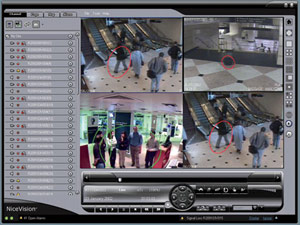Nowadays, everyone is talking about security for their business and home because security is the most effective way to protect your all important assets. There are many security experts who provide security consultant services, which are essential to make a safe and protected place of work for you and your home. Most of the security experts suggest CCTV security camera because these camera protect your business and home indoor and outdoor as well. These types of camera are available in different verity so it is important to know all about security camera. There is one of the best cameras that is hdcvi camera suggested by security experts because hd security cameras are more clever and able than traditional CCTV cameras. Therefore, it is important to know all things about hdcvi cameras and its features.
HDCVI stands for high definition composite video interface and is also known as the high definition CCTV. The hdcvi is based on coaxial cable to send out composite video signal brand new technology; adopting analog signal modulation technology and progressive scan CMOS image sensor to bring 1280H (1280x 720) and 1920H (1920×1080) high definition video signal. It allows for long transmission distance, high resolution, better reliability and also a cost-effective solution. Thus, hdcvi cameras proficiently transmit its high definition video signals by coaxial cable in a pure, uncompressed and lossless transmission. The coaxial cable is not only able to transmit many signals but it also transmits different types of signals. The hd-cvi cameras and DVRs can communicate through each other by coaxial cabling that is using high definition audio signals, video signals and two-way direct signals that allow you to adjust the PTZ status of your surveillance cameras.
Features of hdcvi cameras
The hd-cvi cameras include many features that are useful and valuable for security.
- It transmits both resolution 720p and 1080p video resolution over coaxial.
- The hdcvi dvrs are available in 4 Channel DVR and 8 Channel DVR.
- It gives easy backup and archiving by USB connection.
- These hdcvi systems are smartphone compatible like iPhone, Android devices.
- It is IP66 rated weather resistant HD cameras for both indoor and outdoor use.
- You can find iPhone app from App Store and Android app from Google Play store.
- It gives 75 Degree Viewing Angle.
Thus, security experts provide better and more useful tips to buy efficient cameras that can change your life. But there are many people who are choosing IP cameras. There are various differences between hdcvi vs ip cameras that are useful when you choose IP cameras over other cameras. Security experts always suggest you to choose HD cameras because it is very valuable from other camera.
Dennis Mancino is CEO of HD view 360. www.HDview360.com
source: https://securitycamerasystems123.wordpress.com/2015/08/31/why-we-love-hdcvi-cameras-and-you-should-too/






